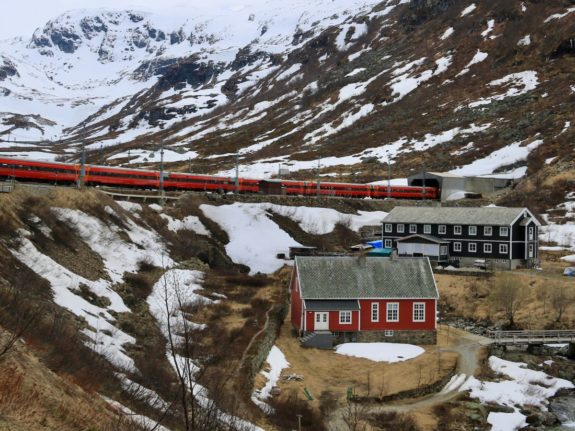Airports
All airlines advise passengers to arrive at least two hours before their flight and, in special cases, may ask passengers to arrive even earlier.
If there is a day when you should maybe consider arriving in good time, it’ll be December 21st and December 22nd. These are the two busiest departure days of the year, according to figures obtained by the newspaper Dagbaldet.
On December 21st, 113,000 passengers will depart from Norway’s airports. On Friday, 111,000 travellers are expected.
In comparison, Christmas Eve will see just 30,000 passengers. What makes the two days before Christmas Eve even busier is that many will bring extra luggage
As Oslo Gardermoen is one of Europe’s most punctual airports, many travelling from the capital can expect a smooth experience as the airport doesn’t have a reputation for chaos.
What you can bring in your suitcase
Many will want to bring food in or out of Norway to give to their friends and families. Others may have received gifts that they wonder whether they can bring in their luggage.
When arriving from or travelling outside the EU/EEA, you can’t bring meat, meat products, milk and milk products in your luggage.
When travelling within the EU, you can bring these products. Double-check the rules of the country you are travelling to.
You also aren’t allowed to bring drugs, medicines and poisons without permission. A doctor’s prescription for medication counts as permission. Meanwhile, you can bring small quantities of medicines for personal use.
Alcohol over 60 percent is also banned, as are weapons, fireworks, potatoes, animals and plants.
The Norwegian Customs Authority has more information on its website. Airlines have their own rules too, for example lithium batteries aren’t allowed in the hold.
Many travel experts recommend bringing the most important items in your hand luggage so you can ensure safe handling and to avoid being separated from your luggage in the event that your bag gets diverted.
What’s open and what’s closed
Opening hours for shops, bars and restaurants are quite prohibited. Saturday, December 23rd, will be the last chance to purchase alcohol until December 26th.
State-owned wine monopolies will stop selling alcohol at 4pm, and supermarkets will stop at 6pm on the Saturday before Christmas.
Bars and restaurants will be able to serve alcohol. When it comes to finding a restaurant in Norway on Christmas Eve, many will be closed, and the ones that are open may require a booking.
This means you should research your options when eating out in Norway over Christmas.
Other restaurants choose to close or have infrequent hours between Christmas and New Year’s to give staff time off.
Travel within Norway
If taking a train or bus within Norway over Christmas, you will need to check your timetables and book in advance if you haven’t already.
Most tickets work on a supply and demand model, so any remaining spaces in the lead-up to Christmas will come at a premium.
The 22nd is likely to be a busy day for transport across all over Norway.
Over Christmas, trains run fewer departures too. There are typically fewer services on Christmas Eve, Christmas Day, Boxing Day, and every day afterwards until January 2nd.
Public transport in the bigger cities will still run, but there will also be reduced services.
When it comes to driving, the 21st and 22nd are the busiest days of the year on the road. Depending on the weather, there could be difficult driving conditions, such as icy roads. Wind and snow can also close roads and mountain passes. The Norwegian Public Roads Administration has an overview of road closures.
Residence permits
When travelling in and out of Norway, one of the most important things to remember is your residence card. The Norwegian Directorate of Immigration (UDI) recommends travellers remember their residence cards when re-entering Norway.
This is because the residence card is your only way of proving that you have the legal right to enter and proof that you haven’t overstayed in the EEA/EA as a third-country national.
Border control may still choose to allow you to enter Norway, but you can expect a stern telling off or a lecture in return.



 Please whitelist us to continue reading.
Please whitelist us to continue reading.
Member comments